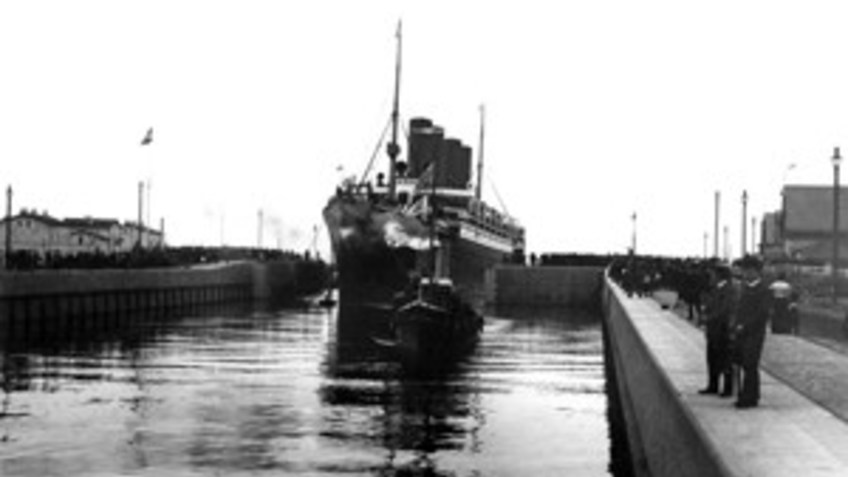Emperior's Lock
The Emperior's Harbors basins I to III were constructed from 1872 to 1909 to provide sufficient capacity for the North German Lloyd's expanding overseas line services. Installations independent of tidal currents were regarded as vital. The first Emperior's basin (opened in 1875) was equipped with a lock to the sea (15 metres passage beam) and entrance in 1876. This installation resembled the New Harbor lock of 1851. Emperior's basin and lock were designed by the Bremerhaven port engineer Carl Friedrich Hanckes (1829-1891). But all these facilities soon proved to be too narrow, so Lloyd moved temporarily to Nordenham on the facing bank of the Weser River from 1890 to 1897.
The State of Bremen reacted with a further extension of the Emperior's port complex before the outbreak of the First World War. Under the supervision of the port engineer Rudolf Rudloff (1851-1922), the construction of a new Emperior's lock was commenced in 1892. The new facility had a chamber length of 223.2 metres, a passage beam of 28 metres and a chamber beam of 45 metres. On August 23rd 1897, the Lloyd steamer BREMEN was the first vessel to pass through, with the official ceremony following on September 20th. The biggest transatlantic liner of the time, the Lloyd vessel KAISER WILHELM DER GROSSE (length 197.7 metres, beam 20.13 metres) was able to pass. This giant new lock made the old Emperior's lock superfluous and it was finally filled up with sand in 1937. Only the former entrance is recognisable in the shape of a bay on the coastline.
When put into service in 1897, the Kaiserschleuse lock was said to be the largest in the world. It is still in operation today. The steam-driven hydraulic facilities to move the gates were replaced by electric gear in the 1950s.
In 2005, the Senate of Bremen approved the extension of the Emperior's lock to a length of 305 metres and width of 55 metres, to provide passage for the bulky car carriers of today. Construction work started in 2007, and its completion was 2011. For this lock extension project, at present the most extensive in Europe, costs of about € 233 million are estimated.


